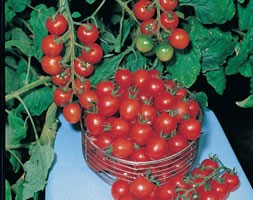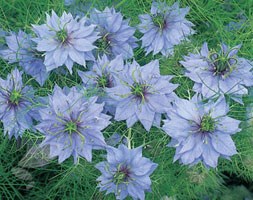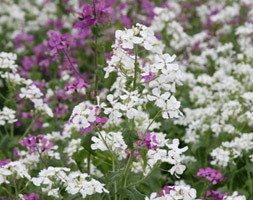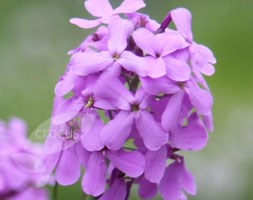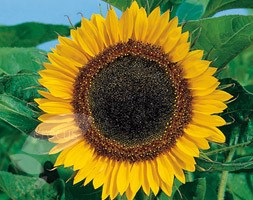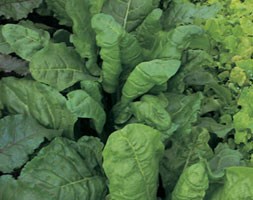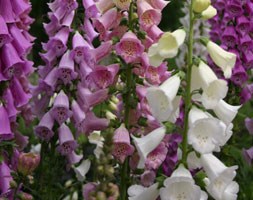Price reductions at Crocus
by Sarah - December 22nd, 2013.Filed under: Crocus, Price Reductions.
Crocus reduced the price on these products today
tomato ‘Gardeners Delight’ (cherry tomato) was £0.89 now £0.79
Position: full sun Soil: humus-rich, moisture retentive soil Probably the most widely-grown tomato in the country, and deservedly so. A ‘cherry’ type, with bite-sized fruits which are perfect for a snack or for popping in the children’s lunchboxes, It’s one of the most reliable toms you’ll ever grow, trouble-free and prolific with long trusses of richly-flavoured sweet red fruits. Growing Instructions: Sow in a frost-free greenhouse or windowsill, potting on seedlings individually as they grow. Once all danger of frost has passed, plant into greenhouse borders or into growbags, or harden plants off and plant outside in rich soil in a sunny spot. Tie in to supports and pinch out side shoots: keep well-watered and feed weekly once flowers form. Keep water levels in the soil consistent to prevent blossom end rot and split fruit. Increase water in hot spells and reduce in cool weather to keep the soil constantly damp. Sow: January-March Harvest: August-September Approximate quantity: 50 seeds.
Papaver commutatum (Caucasian scarlet poppy) was £1.99 now £0.99
Position: full sun Soil: well-drained, preferably poor soil Rate of growth: average Flowering period: June to August Hardiness: hardy annual The upright stems carrying the flower buds snake up from amongst softly hairy grey-green foliage in summer and split open to reveal deep red petals, each with a black spot at its base. These vibrant flowers form big bowls of colour, and as the petals drop, the ground beneath becomes a vivid carpet. Garden care: They tend to resent root disturbance, so sow shallowly, directly into a well prepared bed in spring and water well. As the seedlings develop, thin them out to 30cm intervals keeping just the healthiest and most robust plants. When watering, give the plants a really thorough soak when the soil gets dry, rather than a little water every day. Dead-heading will prolong the flowering period, but at the end of the season you should let some seed heads to develop for next years crop. Sow: March-May Flowering: June-August Approximate quantity: 1000 seeds.
Nigella damascena ‘Miss Jekyll’ (love-in-a-mist) was £1.99 now £0.99
Position: full sun Soil: any well-drained soil Rate of growth: fast growing Flowering period: July to September Flower colour: sky-blue Other features: excellent cut and dried flowers Hardiness: fully hardy Sky-blue, disc-like flowers appear on upright stems clothed in wispy-tipped foliage from midsummer. This easy to grow annual well-drained border. Ideal for the novice or young gardener, the blooms make excellent cut or dried flowers. Garden care: Best sown in situ, 5mm deep. Prepare the seedbed by incorporating some composted organic matter, remove any stones and rake to a fine tilth. Sow in autumn if you want early flowers the following summer, or in mid spring for a later crop. Thin them out when they are large enough to handle allowing 30cm between each. Deadheading regularly will help prolong the flowering period into autumn. Support the plants with twiggy branches in exposed gardens. Sow: September-October or March-May Flowering: June-September Approximate quantity: 500 seeds.
Hesperis matronalis var. albiflora (sweet rocket) was £1.79 now £0.99
Position: full sun or partial shade Soil: fertile, moist, well-drained Rate of Growth: average Flowering period: May to June Hardiness: fully hardy Highly scented, pure white, star-shaped flowers, are held in loose clusters above rosettes of dark green leaves. This biennial or short-lived perennial, will readily self-seed if the spent flowers are not removed, so it is ideal for naturalising. The flowers are highly attractive to bees and other beneficial insects. late spring and early summer evenings. They are also edible and look great sprinkled over salads. Although relatively short-lived, it self-seeds freely. Garden care: Sow seed where it is to grow in late spring, after the worst of the frosts have passed. Prepare the bed well first and then surface sow, thinning the seedlings out as they grow to allow 30cm between each plant. Keep well watered and pinch out the growing tip to encourage bushier growth. Deadheading regularly will help prolong the flowering season, but if you want them to self-seed, allow some of the seed heads to develop fully. Sow: March-May Flowering: May-July Approximate quantity: 500 seeds.
Hesperis matronalis (sweet rocket) was £1.79 now £0.99
Position: full sun or partial shade Soil: fertile, moist, well-drained Rate of Growth: average Flowering period: May to June Hardiness: fully hardy Sweet rocket is most at home in an informal herbaceous border, or when left to naturalise in a wildlife-friendly garden. The deliciously scented, pale lilac flowers form in loose clusters and are attractive to bees and other beneficial insects. Their perfume will fill the air late spring and early summer evenings. They are also edible and look great sprinkled over salads. Although relatively short-lived, it self-seeds freely. Garden care: Sow seed where it is to grow in late spring, after the worst of the frosts have passed. Prepare the bed well first and then surface sow, thinning the seedlings out as they grow to allow 30cm between each plant. Keep well watered and pinch out the growing tip to encourage bushier growth. Dead-heading regularly will help prolong the flowering season, but if you want them to self-seed, allow some of the seed heads to develop fully. Sow: March-May Flowering: May-July Approximate quantity: 500 seeds.
Helianthus ‘Tall Single’ (sunflower) was £1.49 now £0.99
Position: full sun Soil: moderately fertile, humus-rich, moist but well-drained, neutral to alkaline soil Rate of growth: fast-growing Flowering period: July to September Flower colour: yellow Other features: contact with the foliage may aggravate skin allergies Hardiness: hardy annual The sunny-faced flowers of this fun and easy to grow plant are universally loved. Appearing on tall stems, the flowerheads can grow up to 30cm across, and consist of a row of petal-like florets surrounding a large eye, which turns darker with age as the seeds develop. These seeds are loved by many different kinds of birds, so the plants are ideal for wildlife friendly gardens. Where space is limited they can even be grown in large pots, provided they are kept well fed and watered. Garden care: Under glass, start them off in late winter by planting the seeds up to 5cm deep in deep pots or root trainers filled with good seed compost. When large enough to handle, plant outside in spring after gradually hardening off. Alternatively, sow directly into a well-prepared seed bed in spring and thin to 30cm as they grow. If sowing outside, temporarily cover the bed with a net to protect the seeds from birds, and keep an eye out for slugs and snails when the seedlings emerge. Sow: February-June Flowering: June-September Approximate quantity: 50 seeds.
perpetual spinach (perpetual spinach) was £1.49 now £0.99
Position: full sun or partial shade Soil: fertile, moisture-retentive soil Enjoy all the pleasures of growing spinach without any of the trials and tribulations with this super-reliable leafy vegetable. Big, beefy and productive, it looks like spinach and it tastes like spinach: but unlike spinach it doesn’t bolt, even in dry conditions, and it’s bone hardy in winter so you can grow it all year round. Growing Instructions: Sow the large, corky seeds direct where they are to grow in shallow drills. Thin seedlings gradually until plants are 20cm apart (the thinnings can be eaten as baby salad leaves). Alternatively, sow one or two seeds at 20cm intervals and pinch out unwanted seedlings, allowing the strongest to grow on. Keep netted against pigeons while young. Pick as a cut-and-come-again crop, taking outside leaves but leaving the crown intact, and plants will continue producing new leaves over a very long period. Sow: March-August Harvest: All year round Approximate quantity: 250 seeds.
Digitalis purpurea Excelsior Group (foxglove Excelsior Group) was £2.49 now £1.24
Position:full sun to partial shade Soil: moist, humus-rich soil Rate of growth: average to fast-growing Flowering period: May to July Flower colour: purple, pink, creamy-yellow or white Hardiness: fully hardy Incredibly tall flower spikes appear throughout summer bearing large, tubular, purple, pink, creamy-yellow or white flowers, each with maroon or purple spotted throats. Try dotting these pastel-coloured foxgloves through the back of a large cottage-style border or leave them to self-seed and form clumps in a woodland setting. All parts of the plant may cause severe discomfort if ingested and contact with the foliage may irritate skin. Garden care: Lightly press the seed onto the surface of a well-watered seed compost in mid to late spring and keep in a cold frame. When large enough to handle, pot on into individual cells and once they have developed a decent basal rosette of foliage they can be hardened off before planting out. They will usually start to flower in their second year. Sow: March-May Flowering: June-July Approximate quantity: 1000 seeds.
Zinnia ‘Dahlia Flowered Mixed’ (zinnia) was £2.49 now £1.24
Position: full sun Soil: moderately fertile, humus-rich, well-drained soil Rate of growth: average to fast-growing Flowering period: June to August Flowering colour: mixed, including cream, yellow, orange, red and pink Hardiness: tender annual (will die after flowering) Zinnias make great bedding plants as they are easy to grow and will provide months of colour. They were cultivated by the Aztecs and can definitely be described as sun-lovers. The ‘Dahlia Flowered’ cultivars are an heirloom zinnia, which was first introduced in the early 1900’s. It produces flat-faced, tightly packed flowerheads (10 – 15cm across) throughout summer in a wide range of bright colours. They make excellent cut flowers and will encourage bees. Garden care: For early flowers, sow under glass in early spring. Fill a seed tray or pot with good quality compost and space the seeds at 2.5cm intervals and just cover with a sprinkling of compost. Water moderately and when the seedlings are large enough to handle pot on and harden off before planting outside. Alternatively sow thinly outside in a sunny bed after all risk of frost has passed. Thin to 25cm as they grow on. Sowing several batches with a couple of weeks in between each will ensure the flowering period stretches from early summer to the first frosts. Sow: March to June Flowering: June-September Approximate quantity: 130 seeds.







